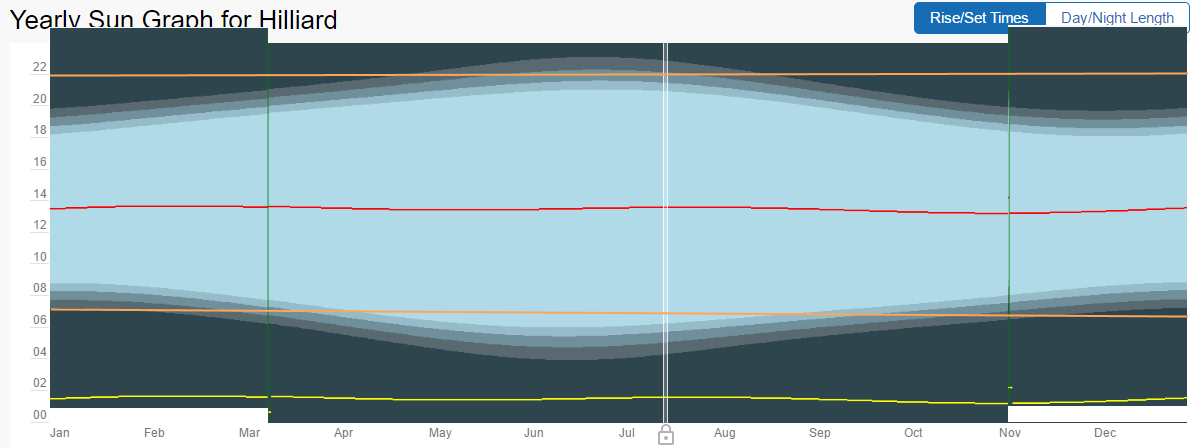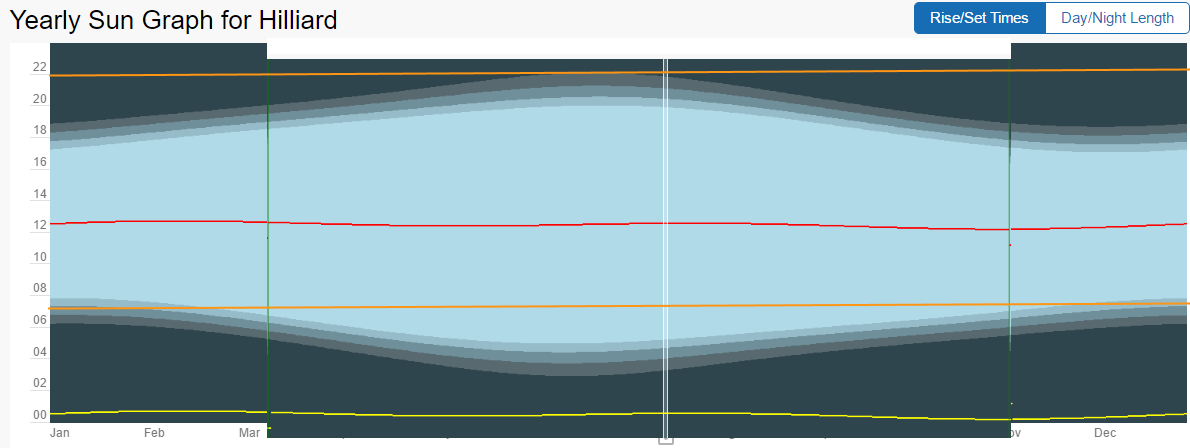Here in the United States, we moved our clocks ahead one hour and moved into Daylight Saving Time (DST). This time setting will last 238 days (65% of the year) until November 5th and then we will move back to Standard Time. I agree with most of the complaints that changing clocks twice a year is quite a hassle and should be discontinued. This problem is compounded because not all parts of the United States conform to DST let alone other countries which may change on different dates. It also can be a huge problem for software and constantly keeping up to date with any legislative changes to DST.
However, unlike most of those complaints I contend that DST is the superior choice for year-round time setting and we should adopt it as the new standard. What DST does is move the sunlit hours into the time period in which more people can use them. If we were to stay on standard time throughout the year, at the peak of sunlit hours in the summer, most of them would be wasted since the sun would rise at almost 5am. I put together some poorly editted examples from a graph I got from TimeandDate.com of the current sunrise and sunset times for my location. I also put in lines for my approximate hours of activity from 7am to 10pm or 0700 – 2200.
Current Setting
All Year Daylight Saving Time
All Year Standard Time
As you can see from the above, the Current Setting does a decent job at keeping all of the sunlit hours within my active hours. DST does the best job and moves more of those sunlit hours into later in the day which is especially nice during the winter because when I get home from work it is usually already completely dark. With DST year-round it would be somewhat dark but not completely. Finally, we see that all year Standard Time is the worst choice. The amount of sunlit hours wasted is incredibly high compared to all the others.
I believe that we will continue to endure with having to adjust the clocks twice a year for some foreseeable time. It is a good fit even if it is a hassle and causes issues albeit for a short period of time that it takes us to adjust. However, should we desire to abolish the time adjustment completely the choice is clear and it be DST that perseveres.